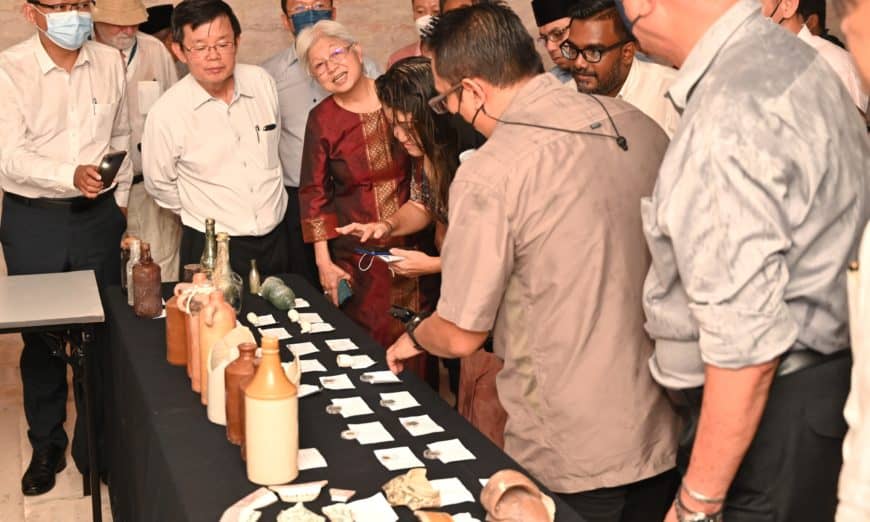THE restoration work of the Fort Cornwallis, a premier historic structure in Penang and one of the oldest structures in Malaysia, is expected to be completed by the first quarter of 2025.
Chief Minister Chow Kon Yeow said so far a total of RM5.8 million had been spent on the restoration work, with the state government contributing RM4.5 million and Think City Sdn Bhd RM1.3 million.
The project, he said, is being undertaken by the George Town Conservation and Development Corporation (GTCDC), which is a tripartite between the state government, represented by Chief Minister Incorporated (CMI), Think City Sdn Bhd and Aga Khan Trust for Culture as the technical adviser.
Apart from that, Chow said the restoration work would continue with the reinstatement of the moat – the south moat and the east moat under Phase Two and Three of the project.
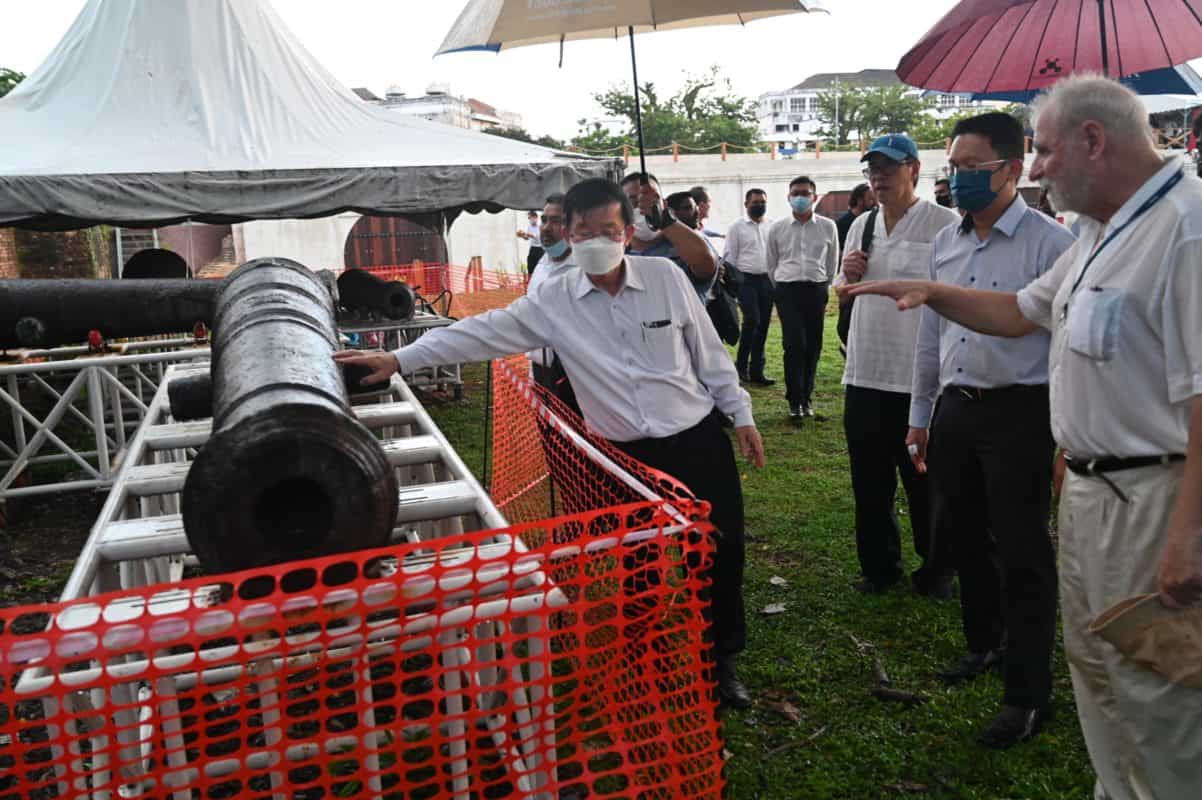
“What we have done so far is inside the fort. The highlight of the restoration work is outside the fort, which is the moat,” Chow told reporters after visiting the site following the conclusion of the State Legislative Assembly sitting at the nearby State Assembly building in Light Street today.
“It is necessary for the defence of the fort against intruders or enemies. That surrounds the whole fort, but under our programme, we will probably be just looking at the south moat, right in front of Dewan Sri Pinang.
“This is the most significant one because it is facing the State Assembly building. And when all the barricades and hoardings are removed, people walking along the walkway would have a panoramic view of the fort, including the moat.
“Another moat will be on the west side of the fort, facing the Astaka. The Astaka will be slightly orientated because the original moat will encroach into the hawker centre, or rather, the hawker centre has encroached into the moat.”
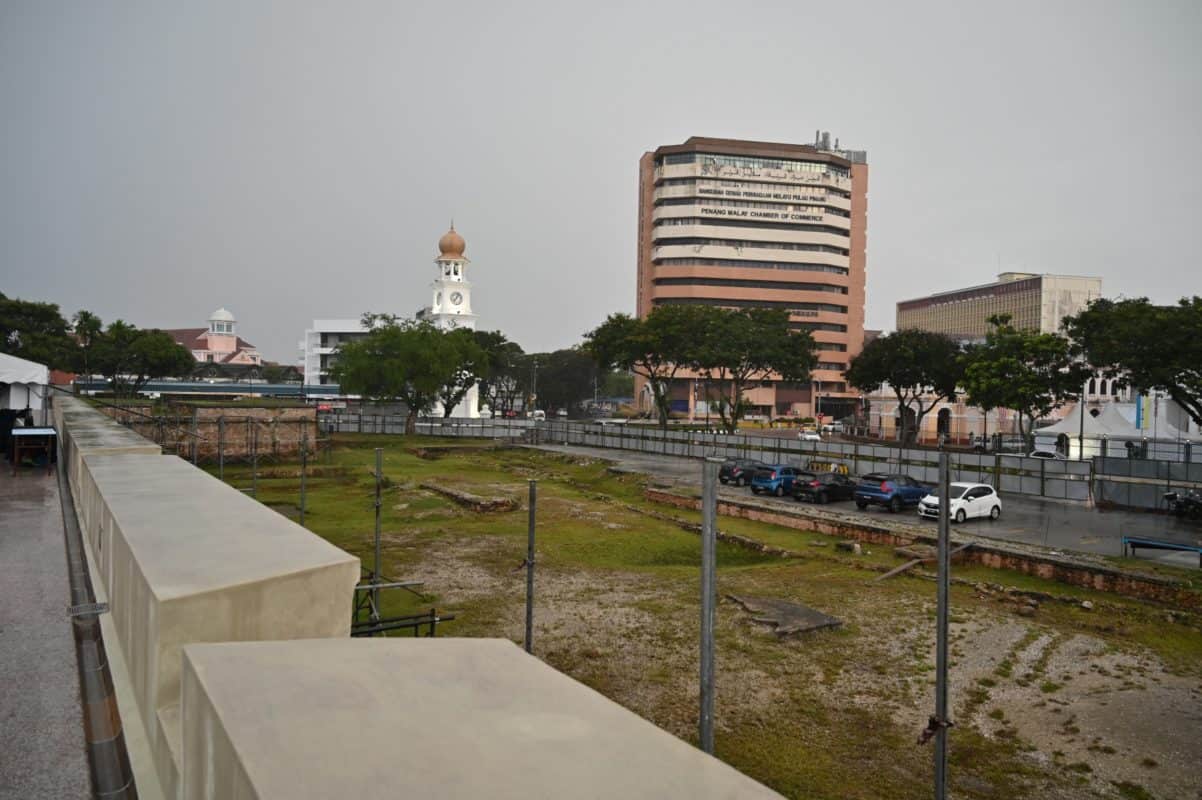
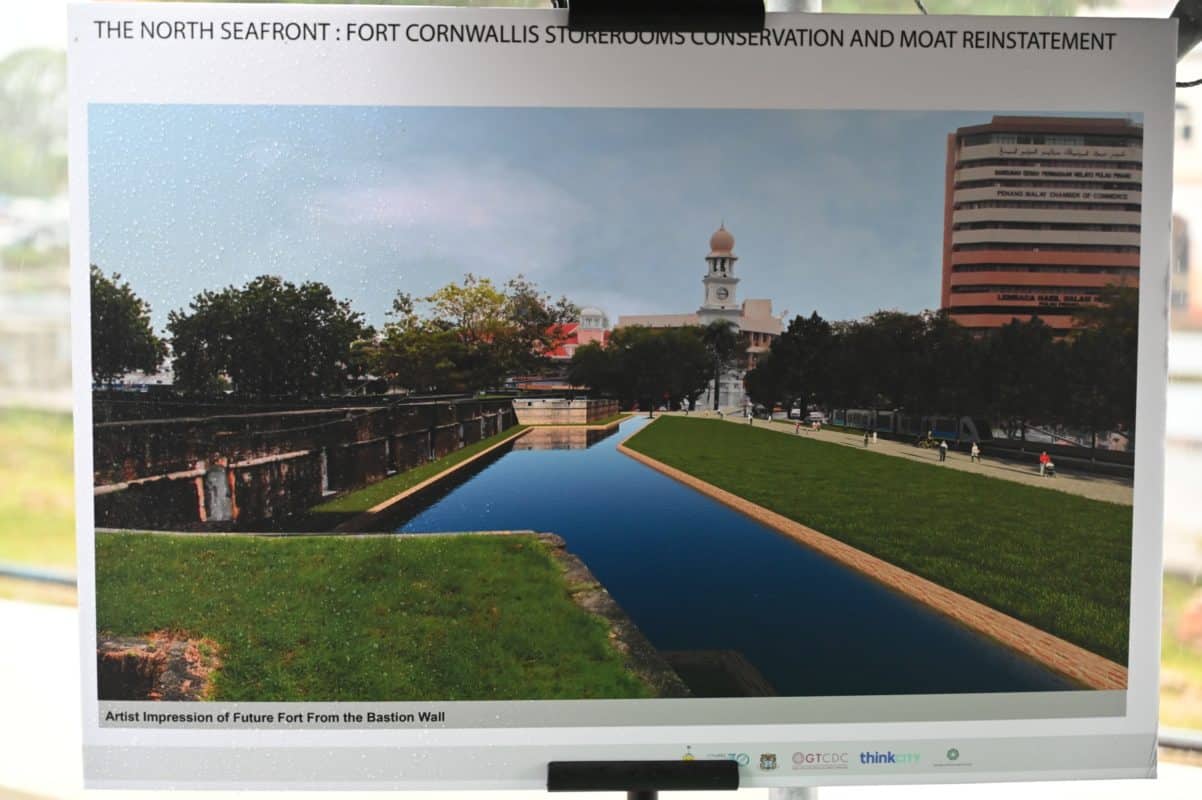
Chow explained that the restoration work at Fort Cornwallis was carried out based on the recommendation of the George Town World Heritage Site Special Area Plan (Appendix II) on the public realm and also the Fort Cornwallis Conservation Management Plan (CMP).
Phase One of the restoration work at the fort had been completed, including the conservation of 10 storerooms found inside the fort.
During the excavation works in 2018 and 2019, some 30,000 artefacts were discovered from the British rule and the Japanese Occupation. They include cannons, mortars, bottles and broken pieces of ceramics and old coins.
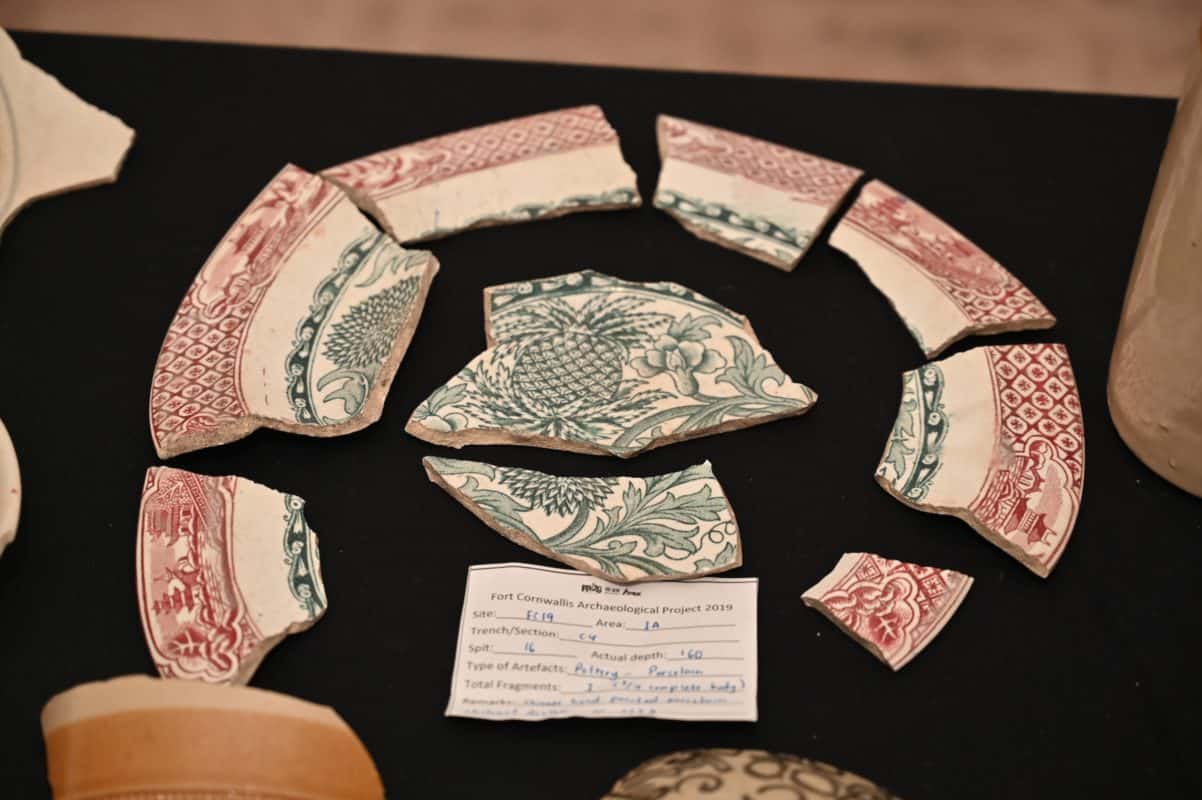
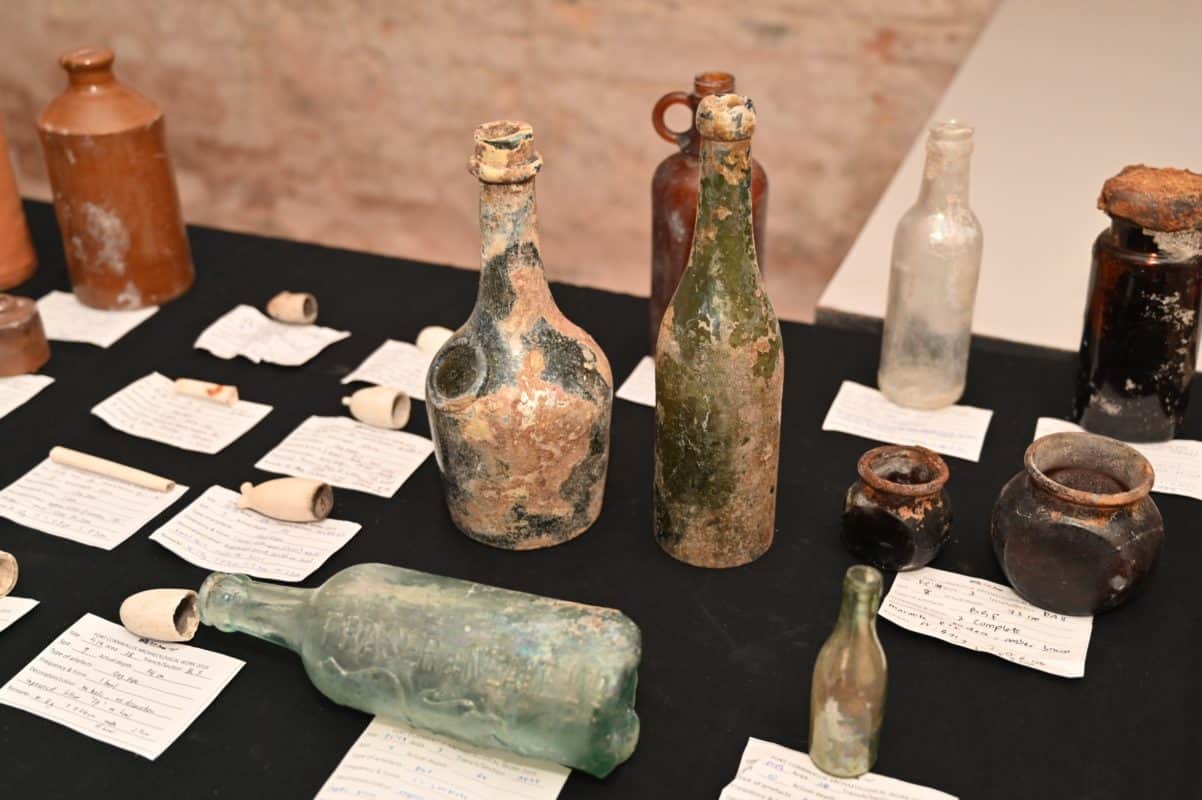
Chow said Phase 1A would begin soon by displaying the exhibits in the storerooms, fixing the lightings and putting up the explanation panels and software to tell visitors the story about Fort Cornwallis and its significance.
He said Fort Cornwallis, a Category One building listed under the care of the Department of National Heritage, is strategically positioned in the proximity to the cruise ship pier.
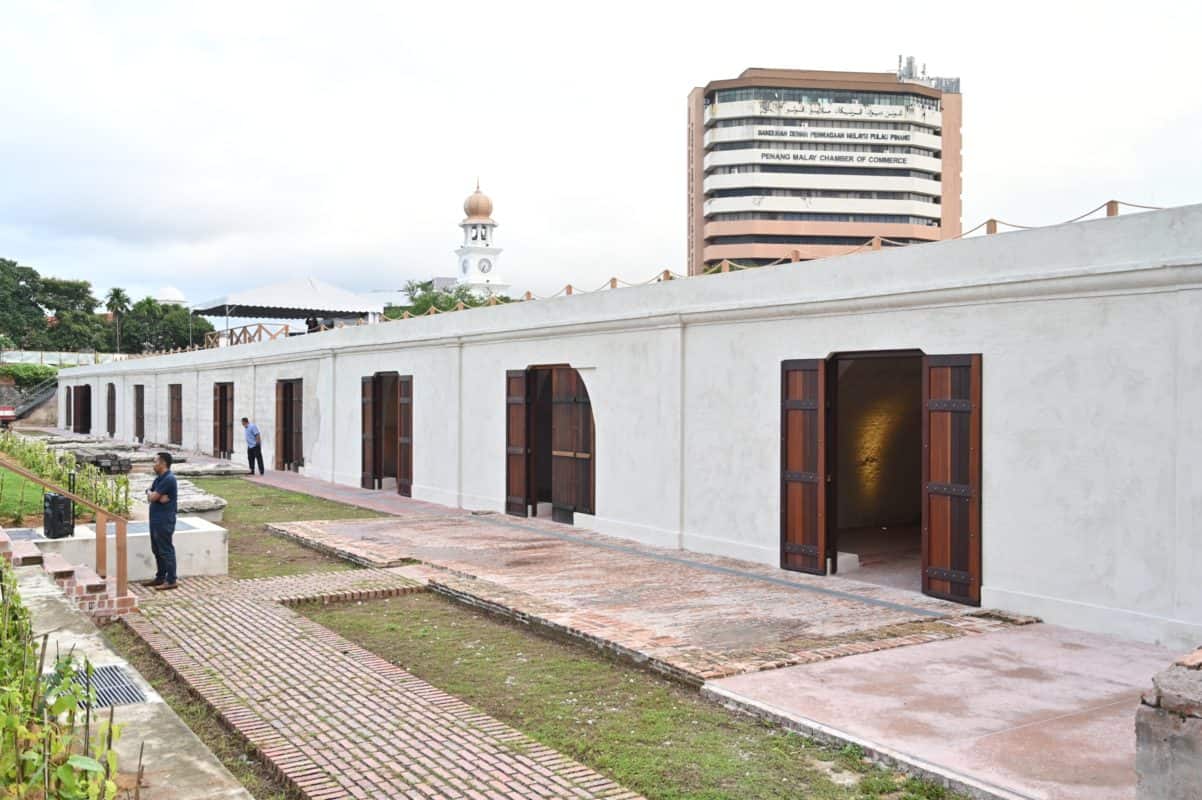
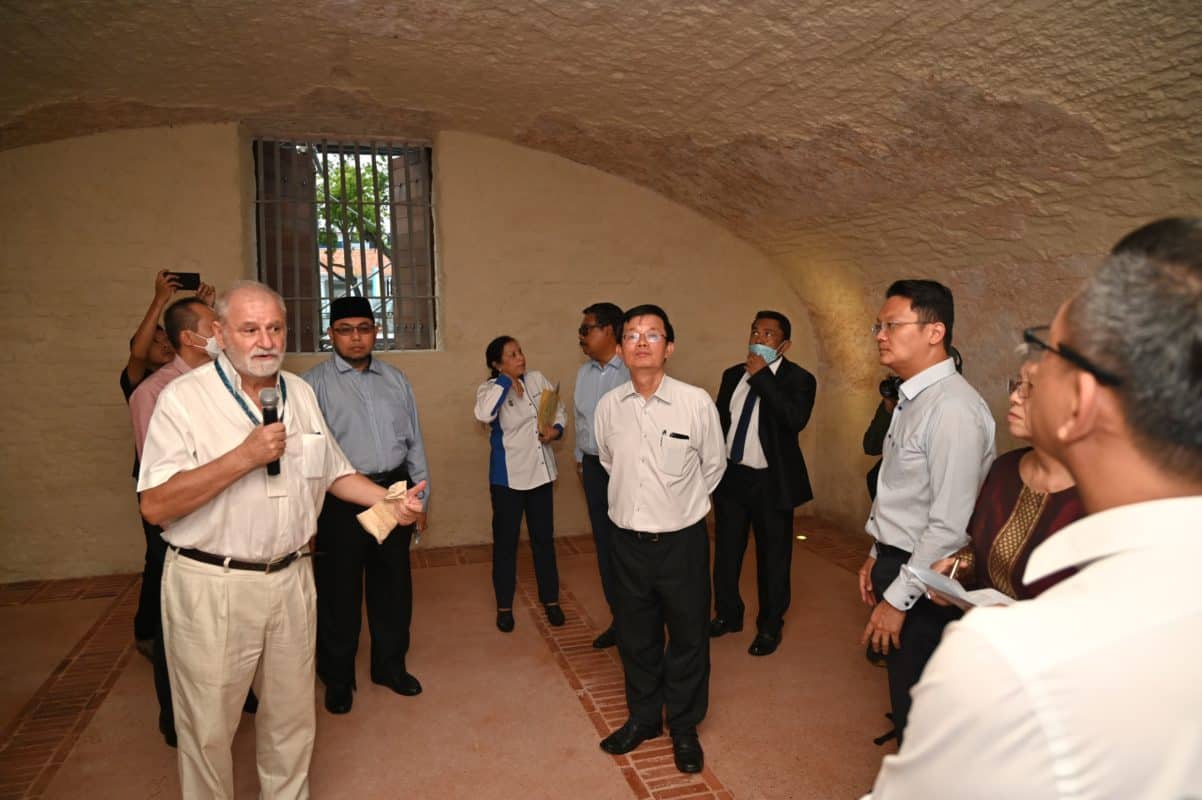
“Nowhere in the country or this region can you step right out of your cruise ship into a world heritage site by just taking a stroll.
“It is ideal to serve as the visitors’ first introduction to the history of the city and the island through engaging presentations and exhibits.
“So, the fort is a very significant asset of this world heritage zone. The state is committed to continuing with what has been planned, probably phasing it out according to availability of funds,” he said.
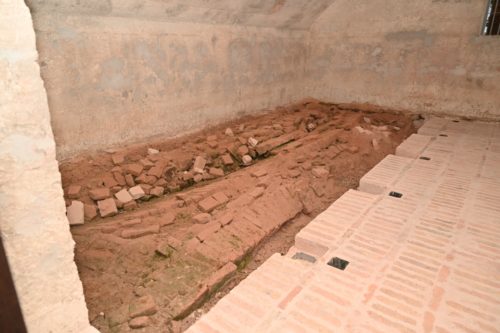
He added that the Fort Cornwallis project is one of the 14 projects under the North Seafront Improvement Programme.
The Esplanade seawall project, which was completed recently and attracted a lot of people, is also another of the 14 projects.
Chow said almost half of the 14 projects had already been completed, like the English Garden, the Town Hall, and even the field (padang) which was upgraded a few years ago with a drainage system.
Another project, he said, is the Lebuh Light pedestrian walkway, probably the widest pedestrian walkway in the city and in the state.
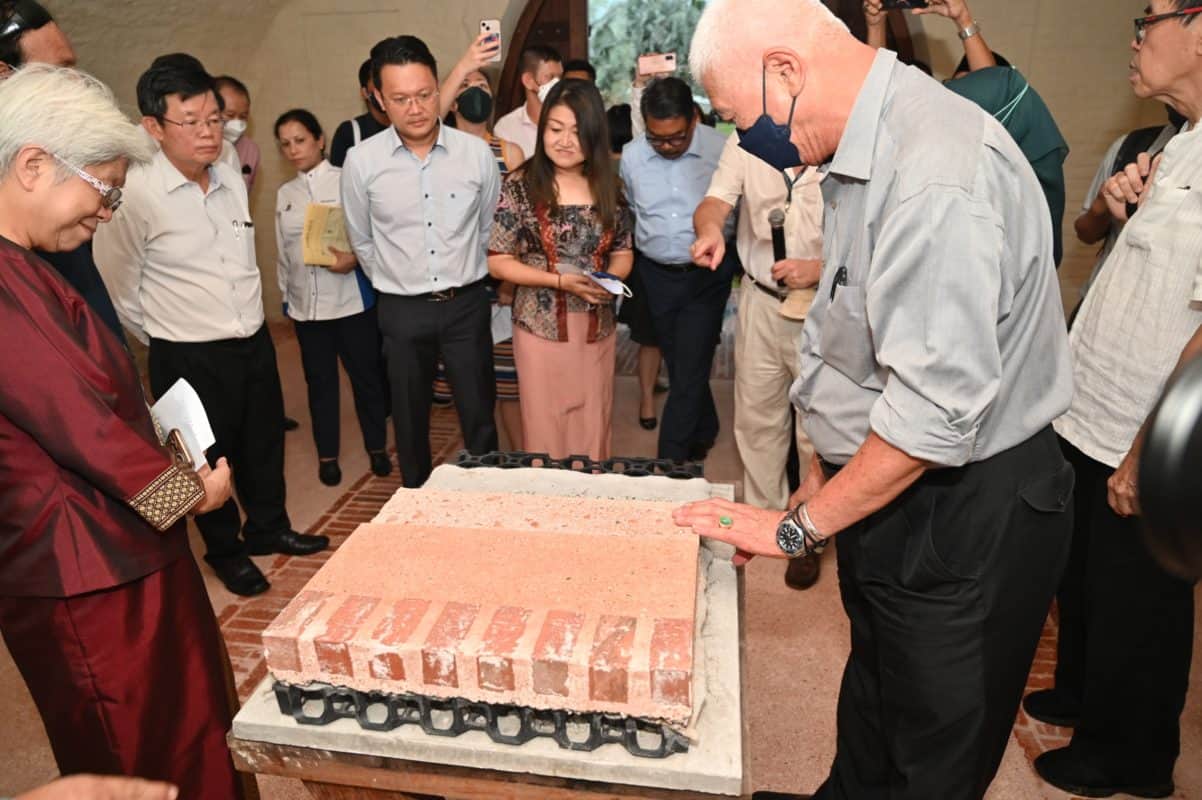
According to CMI deputy general manager S. Bharathi, a budget of RM7.2 million had been approved by the state government for the moat restoration. She said the moat restoration work would begin in the last quarter of this year after the tender process is done.
She said while waiting for the next phase to begin, planning for the museology programme would begin so that the museology content could be installed and exhibited concurrently with the construction of the moat.
“The moat restoration work will take two years and it is expected to be completed by the first quarter of 2025,” she said.
Accompanying Chow during the visit were state executive councillors Phee Boon Poh, Chong Eng and Yeoh Soon Hin, as well as several state assemblymen and heads of departments.
At hand to brief them during the tour were Think City director Laurence Loh, Think City technical adviser Francesco Siravo, Think City technical manager Santo Giovanni, USM researchers Ain Ali and Shaiful Shahidan.
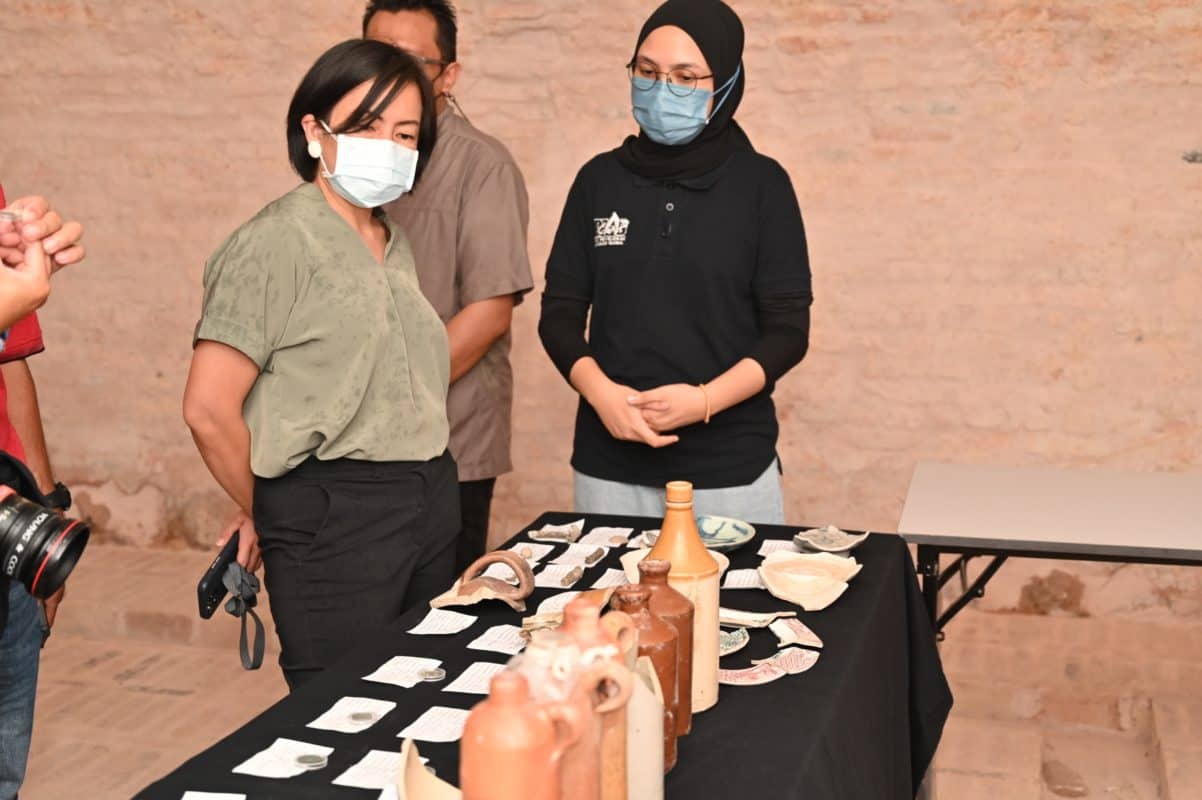
Loh said Fort Cornwallis is the only surviving, intact, masonry fort in the whole of Malaysia.
“It is also one of the first forts built by the British. As a heritage site, it is one of the most important sites in Malaysia.
“So important was that the Department of National Heritage had gazetted it as a national heritage monument,” said Loh, who strongly believes that whatever investment poured in would be worth it when it draws throngs of visitors, especially with the expansion of the nearby port that can accommodate six cruise ships.
Rain came midway through the tour but it stopped quickly. Then, a beautiful rainbow could be seen in the sky, which to many is a symbol of hope and promise of better times to come.
Story by K.H. Ong
Pix by Ahmad Adil Muhamad
Video by Adleena Rahayu Ahmad Radzi

